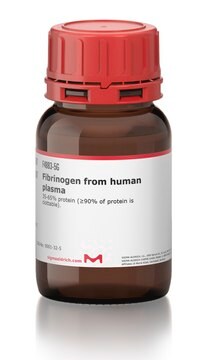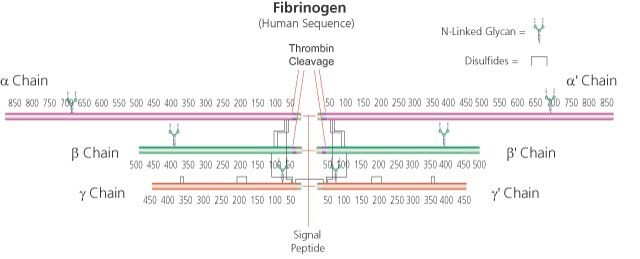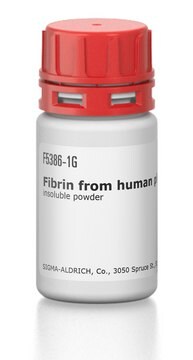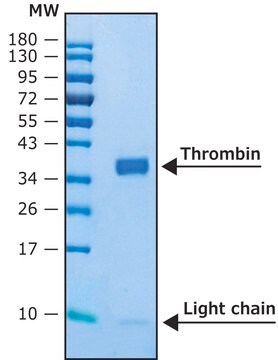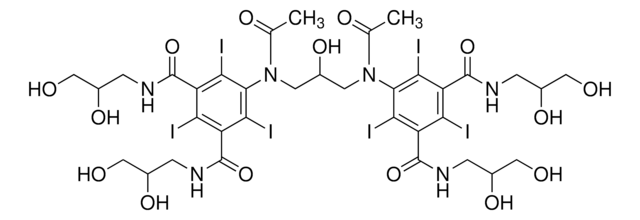F6755
Fibrinogen from rat plasma
60-80% protein (≥60% of protein is clottable)
Sinônimo(s):
Factor I
About This Item
Produtos recomendados
fonte biológica
rat plasma
Nível de qualidade
forma
powder
qualidade
60-80% protein (≥60% of protein is clottable)
peso molecular
α-chain 63.5 kDa
β-chain 56 kDa
γ chain 47 kDa (about 4% carbohydrate content)
soluble dimer 340 kDa
concentração
60-80% (biuret)
técnica(s)
cell culture | mammalian: suitable
immunoblotting: suitable
temperatura de armazenamento
−20°C
Informações sobre genes
rat ... Fga(361969) , Fgb(24366) , Fgg(24367)
Aplicação
- in the preparation of growth factor solutions
- to apply on discontinuous SDS-polyacrylamide gels for the detection of IgG (immunoglobulins) type antibodies by immunoblot analysis
- to mix with cell suspension to form a clot and retain the cells for avoiding its dispersion during transplantation
Ações bioquímicas/fisiológicas
Qualidade
Nota de análise
Código de classe de armazenamento
11 - Combustible Solids
Classe de risco de água (WGK)
WGK 3
Ponto de fulgor (°F)
Not applicable
Ponto de fulgor (°C)
Not applicable
Equipamento de proteção individual
Eyeshields, Gloves, type N95 (US)
Certificados de análise (COA)
Busque Certificados de análise (COA) digitando o Número do Lote do produto. Os números de lote e remessa podem ser encontrados no rótulo de um produto após a palavra “Lot” ou “Batch”.
Já possui este produto?
Encontre a documentação dos produtos que você adquiriu recentemente na biblioteca de documentos.
Os clientes também visualizaram
Nossa equipe de cientistas tem experiência em todas as áreas de pesquisa, incluindo Life Sciences, ciência de materiais, síntese química, cromatografia, química analítica e muitas outras.
Entre em contato com a assistência técnica
